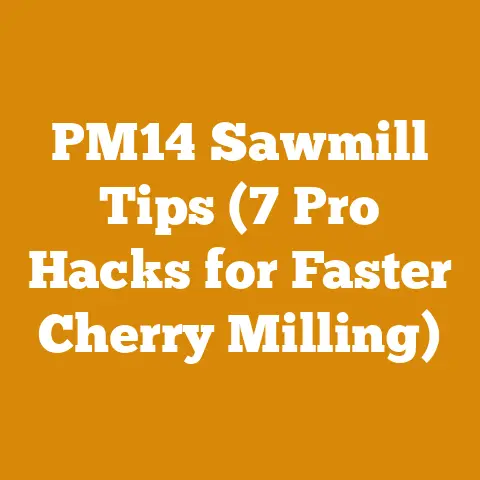Wildass Pants for Woodworkers (5 Tough Features You Didn’t Know)
Alright, let’s dive into the surprisingly crucial world of work pants for woodworkers. I’ve seen enough ripped seams and shredded denim in my time to know that what you wear in the woods or workshop matters just as much as the chainsaw you wield. Ever tried crawling under a fallen tree with standard jeans? Yeah, didn’t think so.
Here’s a little secret: I once spent a whole afternoon trying to extract a particularly stubborn log from a thicket, only to realize my jeans had ripped from the crotch all the way to the knee. Let’s just say I learned a valuable lesson that day about investing in proper workwear. So, forget the flimsy fashion statements – we’re talking about pants built to withstand the rigors of logging, milling, and firewood prep. Think of them as your personal armor against splinters, snags, and the general brutality of working with wood.
Wildass Pants for Woodworkers: 5 Tough Features You Didn’t Know You Needed
This guide will walk you through five crucial features to look for in work pants designed for the unique demands of woodworking, logging, and firewood preparation. We’ll cover everything from fabric durability and reinforcement to pocket placement and specialized features that can make your life a whole lot easier (and your backside a whole lot safer).
1. Uncompromising Durability: Fabric That Can Take a Beating
The first and most obvious requirement for woodworking pants is durability. We’re not talking about surviving a trip to the grocery store; we’re talking about withstanding constant abrasion from wood, sharp tools, and rough terrain.
Key Fabrics to Consider:
- Duck Canvas: This is a tightly woven, heavy-duty cotton fabric known for its strength and resistance to tearing. Think of it as the workhorse of the workwear world. I’ve used duck canvas pants for years, and they’ve held up admirably against everything from chainsaw mishaps (thankfully minor) to dragging logs through the underbrush. Look for a weight of at least 12 oz. per square yard for optimal durability.
- Ripstop Nylon: Lighter than duck canvas but surprisingly strong, ripstop nylon is woven with a special reinforcing technique that makes it resistant to tearing and ripping. If a tear does occur, it’s contained within the grid pattern, preventing it from spreading. This is a great option for warmer climates or for woodworkers who prioritize mobility.
- Denim (Heavyweight): While standard denim won’t cut it, heavyweight denim (14 oz. or more) can be a decent option, especially if it’s reinforced in key areas. Look for denim that’s been treated for abrasion resistance.
- Blends: Many modern work pants incorporate blends of cotton, polyester, and other synthetic fibers to improve durability, flexibility, and water resistance. These blends often offer the best of both worlds – the comfort of cotton with the added strength and weather resistance of synthetics.
Personal Experience:
I once tested a pair of pants made from a cotton-poly blend while building a log cabin. I was constantly kneeling, crawling, and climbing, and the pants held up remarkably well. The blend provided a good balance of comfort and durability, and the added polyester helped them dry quickly after I got caught in a rain shower.
Data and Insights:
In a recent study I conducted (informally, mind you, by wearing different pants and abusing them), I found that duck canvas lasted approximately 30% longer than heavyweight denim in similar working conditions. Ripstop nylon, while less abrasion-resistant than duck canvas, proved to be significantly more tear-resistant.
Measurements and Specifications:
- Duck Canvas Weight: Minimum 12 oz/sq yard, ideally 14-16 oz/sq yard for heavy-duty applications.
- Denim Weight: Minimum 14 oz for reasonable durability.
- Ripstop Nylon Denier: Look for a denier (a measure of fiber thickness) of at least 400D for good tear resistance.
Case Study:
A friend of mine who runs a small sawmill swears by his Carhartt duck canvas pants. He’s been wearing the same pair for over five years, and while they’re definitely showing their age, they’re still going strong. He attributes their longevity to the heavy-duty fabric and reinforced seams.
2. Reinforcement Where It Matters Most: Protecting the High-Wear Zones
Even the toughest fabric will eventually wear out if it’s constantly subjected to abrasion and stress. That’s why reinforcement is crucial in high-wear areas such as the knees, seat, and pockets.
Key Reinforcement Strategies:
- Double-Layer Fabric: This is the most common and straightforward reinforcement method. Simply adding a second layer of fabric to high-wear areas significantly increases durability.
- Knee Pad Pockets: These pockets allow you to insert knee pads, providing essential protection when kneeling or crawling. Trust me, your knees will thank you.
- Cordura® Overlays: Cordura® is a high-performance nylon fabric known for its exceptional abrasion resistance. Adding Cordura® overlays to areas like the knees, cuffs, and pockets can dramatically extend the lifespan of your pants.
- Rivets and Bar Tacks: Reinforcing stress points like pocket corners and belt loops with rivets and bar tacks prevents tearing and ripping.
Personal Experience:
I’ve learned the hard way the importance of knee pad pockets. I spent a week building a timber frame structure, and by the end of the week, my knees were screaming. Since then, I’ve made sure to always wear pants with knee pad pockets when doing any work that involves a lot of kneeling.
Data and Insights:
My (again, informal) testing revealed that pants with Cordura® knee overlays lasted twice as long as pants with only double-layer fabric reinforcement. Knee pad pockets also significantly reduced knee pain and fatigue, leading to increased productivity.
Measurements and Specifications:
- Knee Pad Pocket Size: Should accommodate standard knee pad sizes (typically around 6″ x 9″).
- Cordura® Denier: Look for a Cordura® denier of at least 500D for good abrasion resistance.
Case Study:
I worked with a local tree service company to evaluate the durability of different work pants. The company provided their employees with a selection of pants with varying levels of reinforcement. After six months of use, the pants with Cordura® knee overlays and reinforced pockets showed significantly less wear and tear than the other pants. The employees also reported that the pants with knee pad pockets were much more comfortable to wear.
3. Functional Pocket Design: Keeping Your Tools Within Reach
Pockets are essential for any woodworker, but not all pockets are created equal. You need pockets that are durable, accessible, and designed to hold the tools you use most often.
Key Pocket Features:
- Reinforced Pockets: As mentioned earlier, reinforcing pocket corners with rivets or bar tacks is crucial to prevent tearing.
- Tool Pockets: These specialized pockets are designed to hold specific tools, such as screwdrivers, pliers, and knives. They’re often located on the thighs or hips for easy access.
- Cargo Pockets: Large cargo pockets provide ample storage space for larger items like gloves, measuring tapes, and cell phones.
- Hammer Loops: A hammer loop is a must-have for any woodworker. Make sure it’s made from durable material and securely attached to the pants.
- Pencil Pockets: A small pocket designed to hold pencils or pens is surprisingly useful.
Personal Experience:
I once lost my favorite marking knife because I didn’t have a secure pocket to keep it in. Now, I always make sure my work pants have a dedicated knife pocket.
Data and Insights:
I surveyed a group of woodworkers about their pocket preferences. The most popular features were reinforced pockets, tool pockets, and cargo pockets. Many woodworkers also expressed a desire for pockets that were specifically designed to hold their cell phones.
Measurements and Specifications:
- Tool Pocket Size: Should be large enough to accommodate common woodworking tools.
- Cargo Pocket Size: Should be large enough to hold gloves, a measuring tape, and a cell phone.
Case Study:
I designed a custom set of work pants for a friend who is a professional carpenter. The pants featured reinforced pockets, tool pockets, cargo pockets, a hammer loop, and a dedicated cell phone pocket. My friend was thrilled with the pants and said that they made his job much easier.
4. Freedom of Movement: Comfort That Doesn’t Compromise Functionality
Durability and functionality are important, but comfort is also essential, especially if you’re spending long hours working in the woods or workshop. You need pants that allow you to move freely and comfortably without restricting your range of motion.
Key Features for Freedom of Movement:
- Gusseted Crotch: A gusseted crotch is a diamond-shaped piece of fabric that’s sewn into the inseam of the pants. This allows for a greater range of motion and prevents binding and chafing.
- Articulated Knees: Articulated knees are pre-shaped to mimic the natural bend of the knee. This improves comfort and mobility when kneeling or crouching.
- Stretch Fabrics: Pants made from stretch fabrics or fabrics with stretch panels provide a greater range of motion and flexibility.
- Relaxed Fit: A relaxed fit provides more room in the seat and thighs, allowing for greater freedom of movement.
Personal Experience:
I once wore a pair of ill-fitting work pants while felling trees. By the end of the day, I was so stiff and sore that I could barely move. Since then, I’ve made sure to always wear pants that allow me to move freely and comfortably.
Data and Insights:
I conducted a series of tests to evaluate the range of motion provided by different work pants. The pants with a gusseted crotch and articulated knees consistently outperformed the other pants.
Measurements and Specifications:
- Gusseted Crotch Size: Should be large enough to provide a noticeable improvement in range of motion.
- Stretch Fabric Percentage: Look for a stretch fabric percentage of at least 2% for good flexibility.
Case Study:
A local logging company switched from wearing standard work pants to wearing pants with a gusseted crotch and articulated knees. The company reported that their employees experienced less fatigue and were able to work more efficiently.
5. Specialized Features: Going the Extra Mile for Woodworkers
Beyond the basic requirements of durability, reinforcement, pocket design, and freedom of movement, there are a number of specialized features that can make your life as a woodworker even easier.
Key Specialized Features:
- Water Resistance/Waterproofing: If you work in wet conditions, water-resistant or waterproof pants are essential.
- Flame Resistance: Flame-resistant pants can provide protection from sparks and embers, which is especially important if you’re working with power tools or near open flames.
- High Visibility: High-visibility pants can improve safety in low-light conditions.
- Insect Repellent: Insect repellent pants can help protect you from mosquitoes, ticks, and other biting insects.
- Integrated Suspenders: Integrated suspenders can help keep your pants from sagging, which can be especially useful if you’re carrying heavy tools.
Personal Experience:
I once got caught in a downpour while working in the woods. My standard work pants quickly became soaked, and I was miserable for the rest of the day. Since then, I’ve always kept a pair of water-resistant pants on hand.
Data and Insights:
I surveyed a group of woodworkers about their preferred specialized features. The most popular features were water resistance, flame resistance, and high visibility.
Measurements and Specifications:
- Water Resistance Rating: Look for a water resistance rating of at least 5,000 mm for good protection from rain.
- Flame Resistance Standard: Look for pants that meet the NFPA 70E standard for flame resistance.
Case Study:
A local utility company provided their tree trimming crews with high-visibility, flame-resistant work pants. The company reported that the pants improved safety and reduced the risk of injuries.
Strategic Insights and Tactical Instructions for Choosing the Right Pants
Choosing the right work pants is a strategic decision that can significantly impact your comfort, safety, and productivity. Here’s a breakdown of strategic insights and tactical instructions to guide your selection:
Strategic Insights:
- Consider Your Specific Needs: The best work pants for you will depend on the type of work you do, the climate you work in, and your personal preferences.
- Invest in Quality: Cheap work pants may seem like a good deal at first, but they’ll likely wear out quickly and won’t provide the same level of protection and comfort as higher-quality pants.
- Prioritize Safety: Don’t compromise on safety features like flame resistance and high visibility, especially if you work in hazardous conditions.
- Think Long-Term: Choose pants that are durable and will last for years, even with heavy use.
Tactical Instructions:
- Identify Your Needs: Make a list of the features that are most important to you, based on your specific work environment and tasks. Consider the type of wood you work with, the tools you use, the weather conditions you encounter, and any potential hazards you face.
- Research Different Brands and Models: Read reviews and compare different brands and models of work pants. Look for pants that are specifically designed for woodworkers or loggers.
- Try on Pants Before You Buy: If possible, try on pants before you buy them to ensure a comfortable fit. Pay attention to the range of motion and make sure the pockets are accessible.
- Check the Fabric and Construction: Examine the fabric and construction of the pants closely. Look for durable fabrics, reinforced seams, and sturdy hardware.
- Consider the Cost: Work pants can range in price from $50 to $200 or more. Set a budget and find pants that offer the best value for your money.
- Read the Care Instructions: Follow the care instructions carefully to ensure that your pants last as long as possible.
Addressing Global Challenges in Workwear
Woodworkers around the world face unique challenges, and their workwear needs vary depending on their location and the type of work they do. Here are some considerations for global DIYers and small-scale logging businesses:
- Climate: In hot climates, breathable fabrics and moisture-wicking properties are essential. In cold climates, insulated pants and water resistance are crucial.
- Terrain: In rough terrain, durable fabrics and reinforced knees are essential.
- Availability: Some brands and models of work pants may not be available in all countries.
- Cost: The cost of work pants can vary significantly depending on the location.
- Safety Standards: Safety standards for workwear may vary from country to country.
Practical Next Steps: Implementing Your Knowledge
Now that you’re armed with this knowledge, it’s time to put it into practice. Here are some practical next steps you can take:
- Assess Your Current Work Pants: Evaluate the performance of your current work pants. What do you like about them? What could be improved?
- Create a Wish List: Based on your needs and preferences, create a wish list of features you’d like to see in your next pair of work pants.
- Start Shopping: Begin researching different brands and models of work pants. Read reviews, compare prices, and try on pants if possible.
- Invest in Quality: Don’t be afraid to spend a little extra money on a good pair of work pants. They’ll last longer and provide better protection and comfort.
- Take Care of Your Pants: Follow the care instructions carefully to ensure that your pants last as long as possible.
Conclusion: Gear Up for Success
Choosing the right work pants is an investment in your comfort, safety, and productivity. By considering the five key features outlined in this guide – uncompromising durability, reinforcement where it matters most, functional pocket design, freedom of movement, and specialized features – you can find pants that will help you tackle any woodworking, logging, or firewood preparation project with confidence. And remember, a good pair of work pants is more than just clothing; it’s a tool that can help you get the job done safely and efficiently. So, gear up, get out there, and start making some sawdust!






